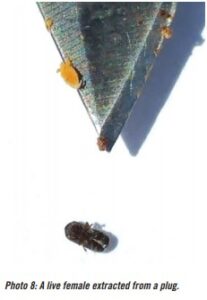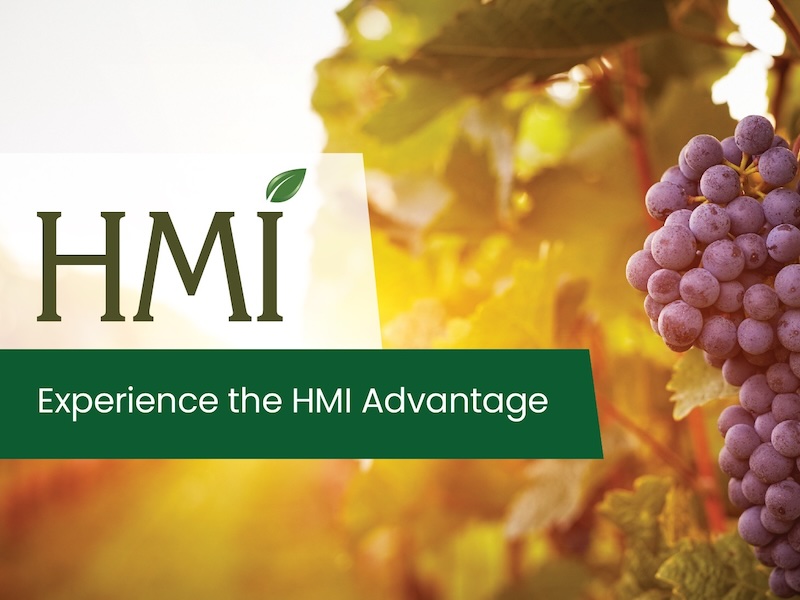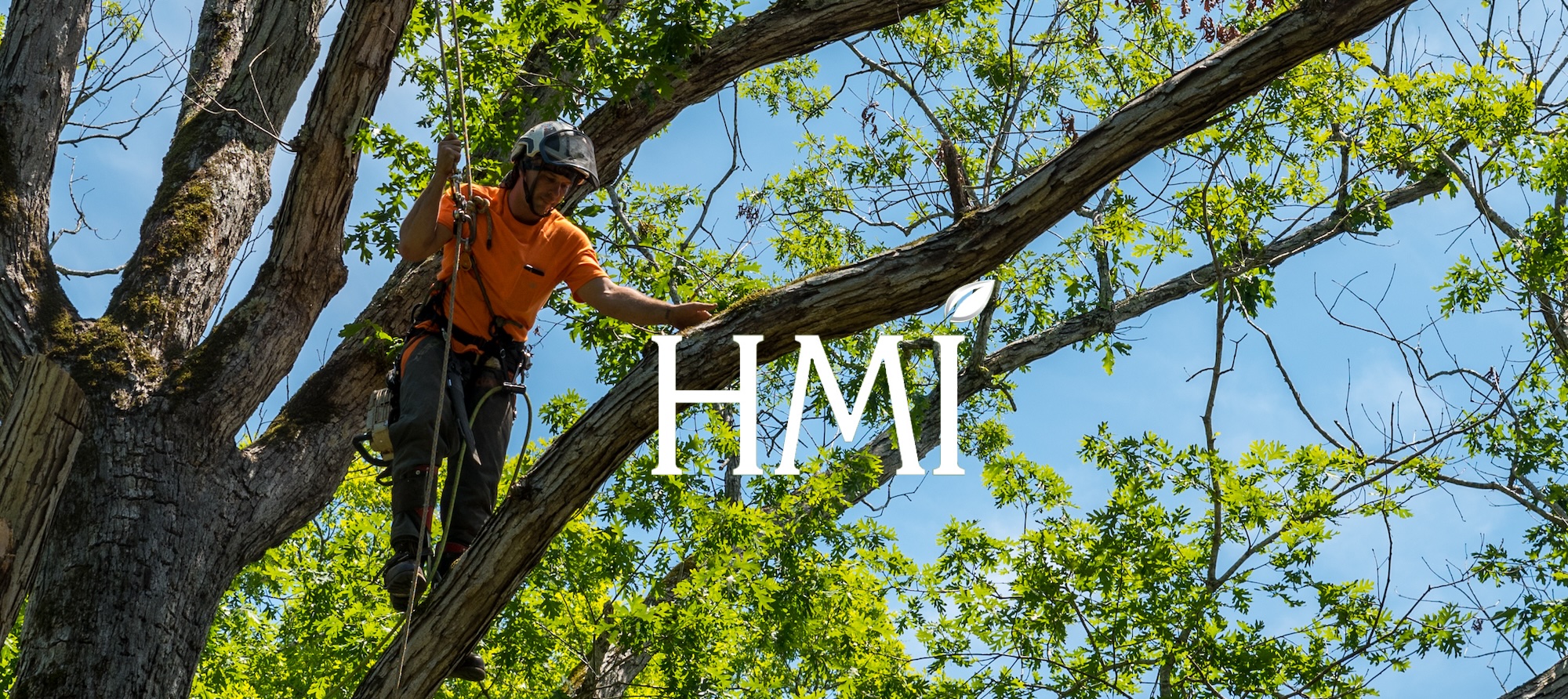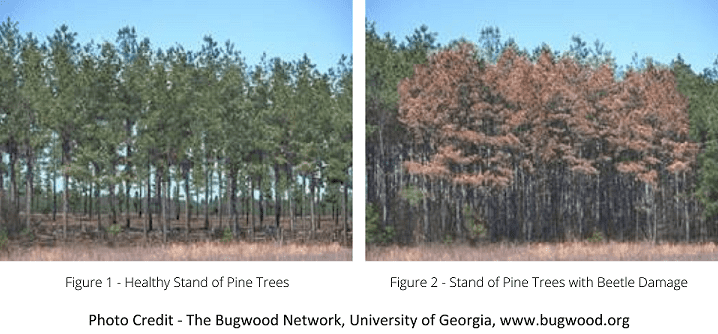 By Ian Gray, BCMA, CTSP
By Ian Gray, BCMA, CTSP
During my first week of work, in September 2016, as the new City Arborist in Claremont, California, my supervisor handed me some material about an invasive pest called the polyphagous shot hole borer (PSHB). The more I read and the more I investigated, the more alarmed I became. It also rang some bells – I was sure I had read previously about this tiny ambrosia beetle. And there it was – TCI Magazine, June 2015 (“Bugged Out West – California Grapples with Two New Borers” by Phil Meeks).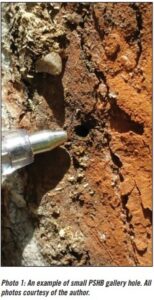
My first foray into the public sector as an urban forester was ultimately consumed with a desperate search to find some way of containing this invasive pest from southeast Asia. The city of Claremont prides itself on being “the City of Trees and Ph.D.’s,” so doing nothing and simply cutting down trees as they succumbed was not an option.
My report here is both a cautionary tale pertaining to the destructive potential of this insect and a snapshot of the skill set required in diagnosing an invasive insect problem and implementing a city-wide program for the protection of the urban forest. The efforts undertaken in Claremont ultimately formed the basis of a case study I used in a graduate thesis for Oregon State University.
 Historical review
Historical review
PSHB was first identified in the United States in the Whittier Narrows in Los Angeles in 2003 on black locust trees (Eskalen, 2013). A subsequent outbreak in 2010 in Long Beach on box elder trees was the early indicator that there was a problem, and research began in earnest in 2012 when PSHB appeared in avocado trees (ibid.). It is widely accepted that the beetle entered the Port of Los Angeles in wooden packing material or shipping pallets (ucanr. edu). Invasive species are a persistent problem despite inspection efforts and ISPM No. 15 – the International Standards for Phytosanitary Management (Haack et al, 2014). This will be an ongoing challenge as global trade continues its seemingly relentless expansion. The emerald ash borer (EAB) is thought to have landed in Detroit, Michigan, in a similar fashion. PSHB is now widely established in the Southern California coastal area from the Mexican border to San Luis Obispo, Calif., covering eight counties (ucisr.edu).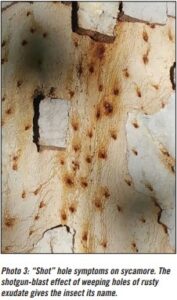
By the numbers
The list of tree species attacked is staggering and additions will continue. As of 2016, more than 304 tree species had been attacked and 138 species had been successfully colonized by the Fusarium dieback fungus, covering 64 families of trees (Eskalen, 2017). Fusarium is a symbiotic fungus carried by the beetle on its exoskeleton and mouth parts that inoculates the woody tissue of the gallery walls and is left to propagate as a food source for the beetles. The number of “reproductive host” species – trees conducive for both insect reproduction and propagation of the fungus – currently stands at 49, of which 19 are California natives (eskalenlab.ucr.edu).
 PSHB’s threat complexity
PSHB’s threat complexity
Before going any further, it is worth going through some of the reasons why this insect is such a threat. The numbers listed (above) speak for themselves and underline why PSHB has emerged as such a formidable challenge. Consider the following:
• Unlike many invasive or problem insects, it does not restrict itself to one species or closely related species because it does not eat the wood for food – it only uses the tree for reproductive habitat and fungal food propagation.
• It is not attracted by tree stress or poor tree health and seems to go after the healthiest medium-to-large specimens – the fungal symbiosis somehow helps direct this decision.
• Attractants generally do not seem to have any effect on the insect – aggregating pheromones are not useful controls.
• At 0.1 inch, the beetle is tiny, making it diffi cult to identify – entry/exit holes are barely the size of the tip a ballpoint pen.
• Symptoms present very differently by tree species – the shotgun-blast effect of weeping holes of rusty exudate that gives the insect its name is distinct in a sycamore but very different from the amber gummosis on Koelreuteria, for example. 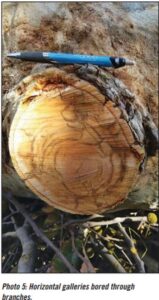
• Unlike EAB, mountain pine beetle (MPB) or eucalyptus borers, for example, which quickly girdle the tree with cambial boring during gallery formation, PSHB bores deeply into the sapwood to establish horizontal galleries – trees die slowly as the fungus gradually plugs vascular tissues, blocking water and nutrient transport.
• That same deep boring can cause structural tree failures – because even heartwood is penetrated by the boring, and tree-top and whole branch failures can occur even when the tree is still green with healthy leaves.
• Initial infestations are not obvious but populations can explode – the insect’s reproductive cycle takes as little as five weeks, with each mated female producing 20 to 50 offspring on 4:1 female to male ratio (if one assumes a conservative 15 mated females per gallery, five broods during a season would result in more than 700,000 insects!). • Targeted treatments are challenged by the limited time the insects spend exposed outside the tree – brothers and sisters mate with each other inside the tree with the mated female merely coming out of the original hole and moving a short distance to bore straight back into the tree.
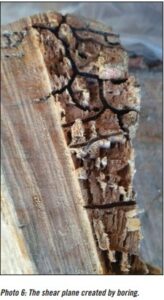 • Many municipalities have moved away from pesticide and fungicide use in recent years in a bid to reduce environmental impacts from chemicals and negative public perceptions surrounding their use.
• Many municipalities have moved away from pesticide and fungicide use in recent years in a bid to reduce environmental impacts from chemicals and negative public perceptions surrounding their use.
• As with any new invasive insect, there was little consensus as to what was the best way to deal with the problem – what treatments would work and what research was available to back up those arguments.
• Money, money, money – many cities are only just emerging from the great recession, and municipal budgets are still crippled with little to spare for expensive and unproven treatment programs.
• Despite the emerging problem, PSHB never received a “Class A” invasive pest rating, which would have unlocked federal funding for research – that funding has been a patchwork of agriculture industry grants (avocado growers), Cal Fire, USFS and state research institutions.
• Removal and disposal-only programs run the risk of “facilitated transportation” of the beetles and the fungus – PSHB can remain active in logs and woody debris for many weeks after tree removal, and the risk of contamination of areas near improperly disposed of woody debris is high.
• Not knowing where PSHB would stop in terms of species attacked poses deep challenges for reforestation efforts – which trees are suitable for street, ROW and park planting efforts?
 The Claremont strategy
The Claremont strategy
In Claremont, hotspots of PSHB were quickly identified in September and October of 2016 in three city parks, and seven heavily infested trees were removed. After consulting with local plant healthcare companies and researchers, an initial round of treatments was undertaken on a select number of sycamores in the affected areas to gain some degree of containment.
This entailed trunk sprays with insecticides and fungicides as well as basal drenches. The downside to this application method is concern over possible environmental contamination due to spray drift and leaching. Trunk sprays also need to be repeated at least three times a year to remain effective.
As further data and research was reviewed, treatment pricing was compared and application methods were assessed, it was decided that trunk injections with emamectin benzoate and propicanizole was preferable. Despite the high product cost of the insecticide, the residual effectiveness claimed for one application was two years and the method entailed minimal environmental contamination. The remaining hurdle was the “sales pitch” to the city council. This was the end point to focused stakeholder outreach where various community organizations were brought up to speed. City commissions and tree committees were necessarily involved as a critical part of the civic process and educational outreach.
By mid-January 2017, after an expedited request-for-proposals period with customized specifications for the chosen application method of trunk injections, a contractor was chosen and the Claremont City Council approved an emergency allocation of roughly $250,000. More than 2,000 trees greater than 12 inches DBH would be treated, primarily sycamores, live oaks and a handful of Koelreuterias. By the time the treatment program was underway, a further five trees were removed and PSHB had been found in four more city parks – this was primarily a function of the difficulty and lag time in identification.
PSHB was known to have been present in the city from at least 2014, when it was first noticed in Rancho Santa Anna Botanical Gardens, private property but within city limits. Sycamores were the favorite target of PSHB and this is refl ected elsewhere in the greater Los Angeles area. The reasoning is that the beetles find trees with thinner bark easier to penetrate. To name but a few, willow, alder, box elder, elm, maple, sweet gum and palo verde are favorites. The big threat from PSHB for the urban forest in Claremont was the high proportion of mature, specimen coast live oaks and sycamores.
Implications for arborists & plant health-care professionals
Urban forests are by definition the sum of both privately and publicly owned trees. In that context it is hard to communicate the complexity of the challenge posed by PSHB to the preservation of those trees in terms of arborist expertise. Containment efforts should always follow best management practices and integrated pest-management protocols. This starts with a determination of what constitutes an “acceptable” level of plant damage or insect population threshold.
The problem with PSHB is that once it gets a foothold, there is also a risk management issue since the boring activity weakens the structural integrity of trees attacked. Heavily infested trees may pose a risk to tree-climber safety due to reduced wood strength. A report circulating in California attributes an arborist fatality in 2016 in Southern California to a structural tree failure as a result of PSHB boring.
Because consensus over definitions of infestation level as well as efficacy of treatment is still elusive, arborist expertise and judgment is paramount. Understanding the pros and cons of not only various application methods but the chemicals involved is critical. How that is communicated to the stakeholder and balanced against their available funds and risk tolerance is the next crucial step. Because PSHB is such a recent problem, there are few guarantees.
The cost of doing nothing preventative is extreme, but removal costs alone could cripple the budgets of smaller cities should PSHB continue unchecked. Orange County Parks and UC Irvine, for example, have already had to remove thousands of trees, and millions more in the greater Los Angeles area are at risk with values in the billions of dollars. It is worth pointing out that in a recent study on efforts to protect urban forests from EAB (trunk injection technology has good data from field trials here), the ratio of total costs to cumulative benefi ts from resulting overall urban forest canopy were found to be two-thirds lower when trees were saved as opposed to being removed and replaced (Sadof et al, 2017).
The City of Claremont opted to try to gain a degree of containment on the problem. Recent monitoring of treated areas indicates that PSHB populations in previously affected trees has been slowed but not eliminated. Many treated trees not previously attacked still appear free of insect activity. However, not only will the treatments need to be repeated every two years, but whilst PSHB activity had previously been concentrated in city parks, there are indications that the insect is beginning to radiate out to untreated street trees and trees on private property. The City is considering a further round of treatment for the next DBH size class down and continues to recommend that private-property owners treat specimen trees preventatively.
Also under consideration is anecdotal evidence that ArborFos treatments for anthracnose in sycamore trees may have a deterrent effect on PHSB attacks. However, until biological controls are found, PSHB will, in all likelihood, continue to devastate a wide range of unprotected urban tree species in the Southern California coastal areas. There is also a clear risk that southwestern states, the Gulf Coast states and southeastern states could be suitable habitat for PSHB.
For more information about PSHB, go to pshb.org or eskalenlab.ucr.edu or cisr.ucr.edu.
References
Eskalen, A. et al. 2012. “First report of Fusarium sp. and its vector tea shot hole borer (Euwallacea fornicatus) causing Fusarium dieback in avocado in California.” Plant Disease. Vol. 9697/1070.
Eskalen, A., Stouthammer, S.C. Lynch, P. Rugman-Jones, M. Twizeyama, A. Gonzalez, T. Thibault. 2013. “Host Range of Fusarium Dieback and its Ambrosia Beetle (Coleoptera: Scolytinae) Vector in Southern California.” Plant Disease. 99:7, 938-951.
Haack, R.A., K.O. Britton, E.G. Brockerhoff, J.F. Cavey, L.J. Garrett, et al. 2014. “Effectiveness of the International Phytosanitary Standard ISPM No. 15 on Reducing Wood Borer Infestation Rates in Wood Packaging Material Entering the United States.” PLoS ONE. 9(5):e96611. DOI:10.1371/journal.pone009661
Kabashima, J. 2017. “Update on Urban Landscape Management of Invasive Shot Hole Borers.” Presentation Paper from CAPCA Continuing Education Workshop, January 26, 2017. Temecula CA.
Sadof, C.S., G.P. Hughes, A.R. White, D.J. Peterson, M.D. Ginzel. 2017. “Tools for Staging and Managing Emerald Ash Borer in the Urban Forest.” Arboriculture & Urban Forestry. 43(11): January.
http://www.cisr.ucr.edu “Polyphagous Shot Hole Borer.”
http://www.eskalenlab.ucr.edu. “PSHB Reproductive Host List.”
Check Out All of December 2017 Issue of Tree Care Industry Magazine Here!
Have a claim with a PSHB problem? Check out our Arborist Inspections to see how HMI can help!
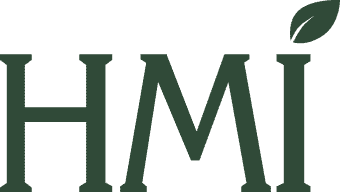
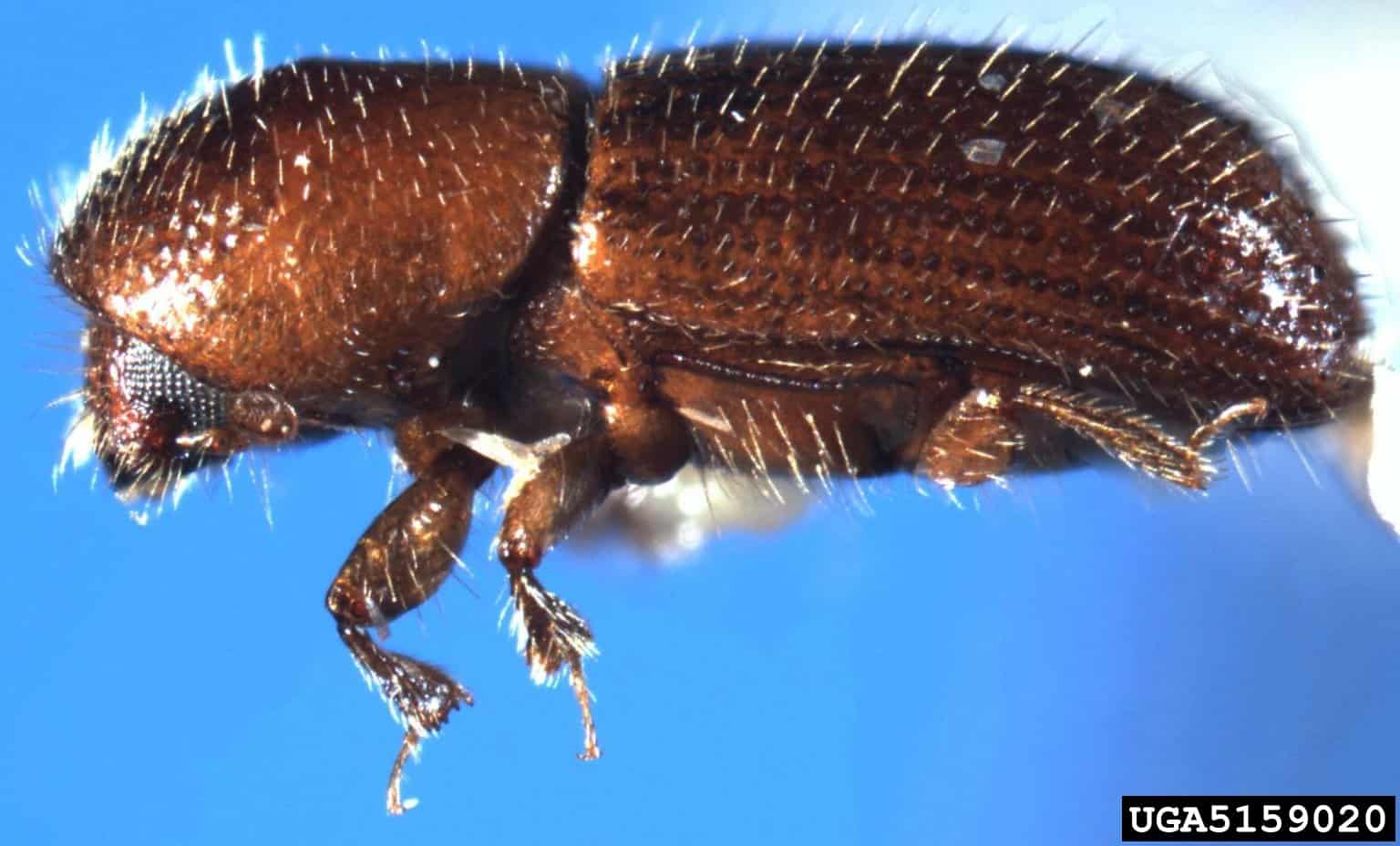
 By Ian Gray, BCMA, CTSP
By Ian Gray, BCMA, CTSP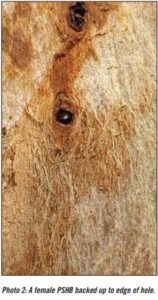 Historical review
Historical review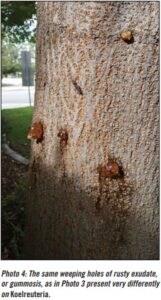 PSHB’s threat complexity
PSHB’s threat complexity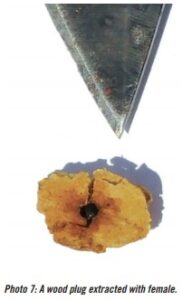 The Claremont strategy
The Claremont strategy